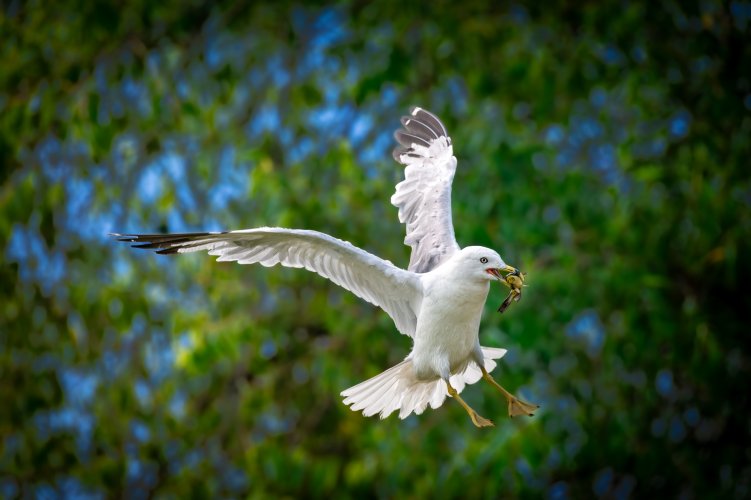Always AF-C with modes like wide area small, wide area large, and I have a custom 1x1 wide area I use when need be. I've tried it with subject detection set to auto (i.e., animal+people+vehicles) and set to animal only and there's no difference. I've tried setting the subject tracking with lock on at 1, 3, and 5 with no difference. I've tried 3D tracking. It hasn't happened much when in this mode so my memory is least certain here, but I think that if I have 3D tracking on a stationary or slow moving subject and it has the eye but then the animal starts moving faster (i.e., takes off) the 3D tracking reverts to just grabbing the body.To help folks reading this thread have some context, what AF settings are you using when you are having this issue?
--Ken
Assuming you're in a mode with subject detection enabled (wide area, auto area, etc), that's possible. It's also possible that the subject isn't exposed enough, or large enough in the frame, to give the camera high enough confidence that it can find the eye reliably. Do you have examples you can share?
Someone on DPR also noticed with his 200-500 it wouldn't focus at times, which I don't really understand (Because it doesn't make sense that the camera would just...not have good af suddenly given the same conditions, just a lens change), so there might be a software bug/quirk with it as well (though this seems less likely to me).
Most of my would-be examples have been deleted since they didn't amount to anything worth saving, but if I scrounge around I can give a few. I've given you all of these uncropped so you can get a sense of the size of the subject when the camera was AFing.
You can only see EXIF info for this image if you are logged in.
This seagull I tracked for a second or two and it actually wasn't flying all that fast because it was really just moving from one spot to another so it never got up to speed. This part of the sequence it was actually moving even more slowly because it was slowing down for its landing. I don't know if it will be visible with the downsizing for the forum, but this one is actually fairly soft and at full resolution it looks like it's probably focused on the wing, which makes sense since as I'm saying it focuses on the body but doesn't grab the eye.
You can only see EXIF info for this image if you are logged in.
In this case it's arguable that geese don't have enough contrast in the face and I suppose that may be the case, but I have to say as long as the lighting is okay and the background is not cluttered (both of which were true here) it picks up geese eyes pretty well for me, and at this size and even smaller, too. In other words, whatever reasons we can find to question whether this situation was too hard for the AF, if the goose was standing or floating there it would have had the eye but it didn't here when it was flying. I tracked this for quite a while actually and it hung onto the body very well the entire time, but never went for the head or eye. For what it's worth, the same applies to the seagulls: when they're not flying it grabs the eyes pretty consistently, even in more difficult conditions than the one pictured above.
You can only see EXIF info for this image if you are logged in.
This duck is another case that is not a super great example, but I post it because it was part of a sequence in which the duck was flying with this background at about this size and where many of the shots before this it was at a different angle and so the eye was visible. I didn't save those because they were not in decent focus.
You can also look at the photo in post #42 of this thread. That bird was gliding nicely and fairly close to me with an uncluttered background and a beautifully stand-out eye.
As I said, I've honestly deleted most of what I would give as examples since, well, they were not worth editing and keeping. However, suffice it to say that the goose and GBH shots are good examples of the general case: a bird flies at a moderate or slow speed, not erratically, across a generally clean background with the head fairly clearly separated from the body of the bird. Replace the goose or GBH with a duck or a green heron or a cormorant or bald eagle (the bald eagle was probably a bit too small so I don't really count it, but if you're curious I'll post it anyways) and the AF grabs and tracks the body but never even picks up the eye for a split second. Put the same bird in a more stationary place and it will get the eye.
Actually, I did find a version of the Eagle from a sequence where it wasn't super small. It may be borderline here, but like the others I'll repeat that there were actually quite a few shots in the sequence where the eagle was a lot closer and larger in the frame but these were just really badly focused so I never imported them.
You can only see EXIF info for this image if you are logged in.


